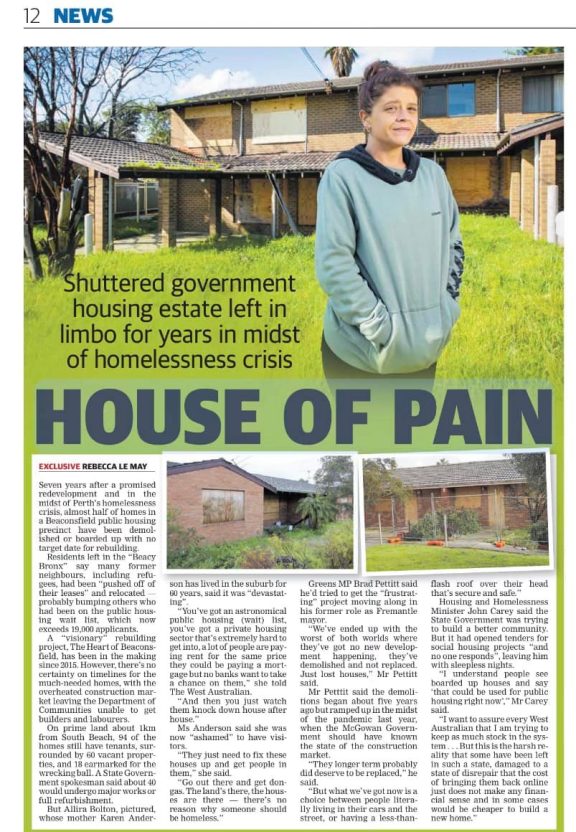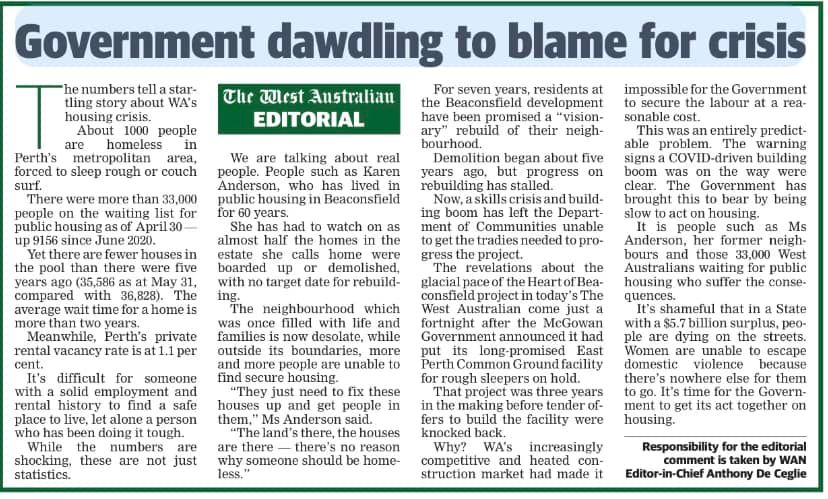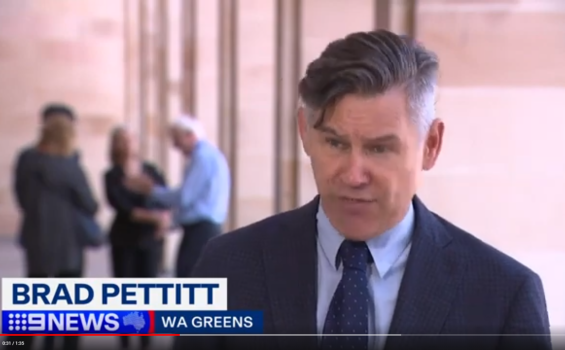
Heart of Beaconsfield Stops Beating
13 August 2022
I want to make some comments on the back of some of the media reporting today on the Heart of Beaconsfield project. For those members who are unaware, that is a large project in Beaconsfield that I was very involved in during my time as mayor. It was in the news today for reasons that none of us should feel happy about. It was a major social housing area—98 per cent of it, according to the media reports. There were several hundred units of social housing. That redevelopment is not going ahead, but unfortunately a large chunk—about two-thirds—has already been demolished, and the government has pulled the pin on any particular time frame for getting on and completing that project.
I am not laying the blame at any one government or governments. I want to highlight this particular case because I think it is terrible. It is a few hundred metres from my house and it is now literally urban blight, right in the middle of the suburb, with boarded-up houses, lots of demolished buildings and the occasional building left in between. People are having to live amongst boarded-up houses and demolished buildings, which is terrible, but it is not a standalone case.
The reason I am standing up tonight is not about this government. It is actually a structural issue that we need to get our heads around. Let me expand it out. Heart of Beaconsfield and Fremantle was going to have 250 to 300 units. That will no longer be part of the housing stock. Just down the road is Burt Street, a beautiful spot near John Curtin High School. Again, that was social housing. But under the Barnett government it was all demolished and not replaced. Now, 10 years later, it sits empty, despite many promises. Up at Holland Street, over consecutive governments, we have had I would say probably 80 or 90 units demolished. Zero have been replaced.
How many times do we do this? This has happened for over a decade, so both sides of the house need to take responsibility for it. Different reasons were given for not replacing them. Under the Barnett government, the argument was that there was not enough demand for new housing as the market was too soft. The argument now is that the market is too hot. Where is the Goldilocks point at which we will replace the social housing that we knock down?
In Fremantle, people want social housing. The community and the council want social housing to be replaced, and it is not being replaced. Too often we hear the excuse that local governments do not want it. That does not fly in my neck of the woods. We are not seeing it replaced, either because there was not enough demand in the past or it is now too hard to build it. It comes back to a fundamental structural problem, which is that we are not giving social housing ongoing investment and the certainty going forward that it will be replaced regardless. The Department of Communities should not just be about playing the housing market. The excuse before was that we could not make money out of it because the market was too soft. The excuse now is that we cannot make money out of it because the building market is too hot. It has to not be about making money; it has to be about providing housing for people who want to live in that area. It is frustrating, because there are empty places where there should be social housing across several suburbs of the City of Fremantle. There should be a mix. They needed to be redeveloped. There was full support from the council at the time. All of us said that the housing stock was getting tired. It was not terrible, but there were better options and better uses for it.
The idea that we quickly demolish but slowly rebuild has to change. It was really good that The West Australian highlighted that today, but we need a real plan that runs not from year to year depending on market conditions, but across a decade and says, “We are going to do this and replace these projects.” Many members would see the same thing in their streets and suburbs—empty, boarded-up social housing that has not been replaced. That has happened year after year. I think we are seeing the consequences of that now. When we asked how many people are on the housing waitlist, we found that the waitlist has got longer and longer. The priority waiting list is also getting longer and longer. I am standing up to say that this is not an isolated situation or issue; it is a structural issue that runs across governments and needs to change. Fundamental changes need to happen in how Development WA or the Department of Communities funds these projects. We should make sure that they happen regardless of where we are sitting in the economic cycle.



Hi Brad, has anything further happened here? Thanks
Nope. Sadly still sitting empty!